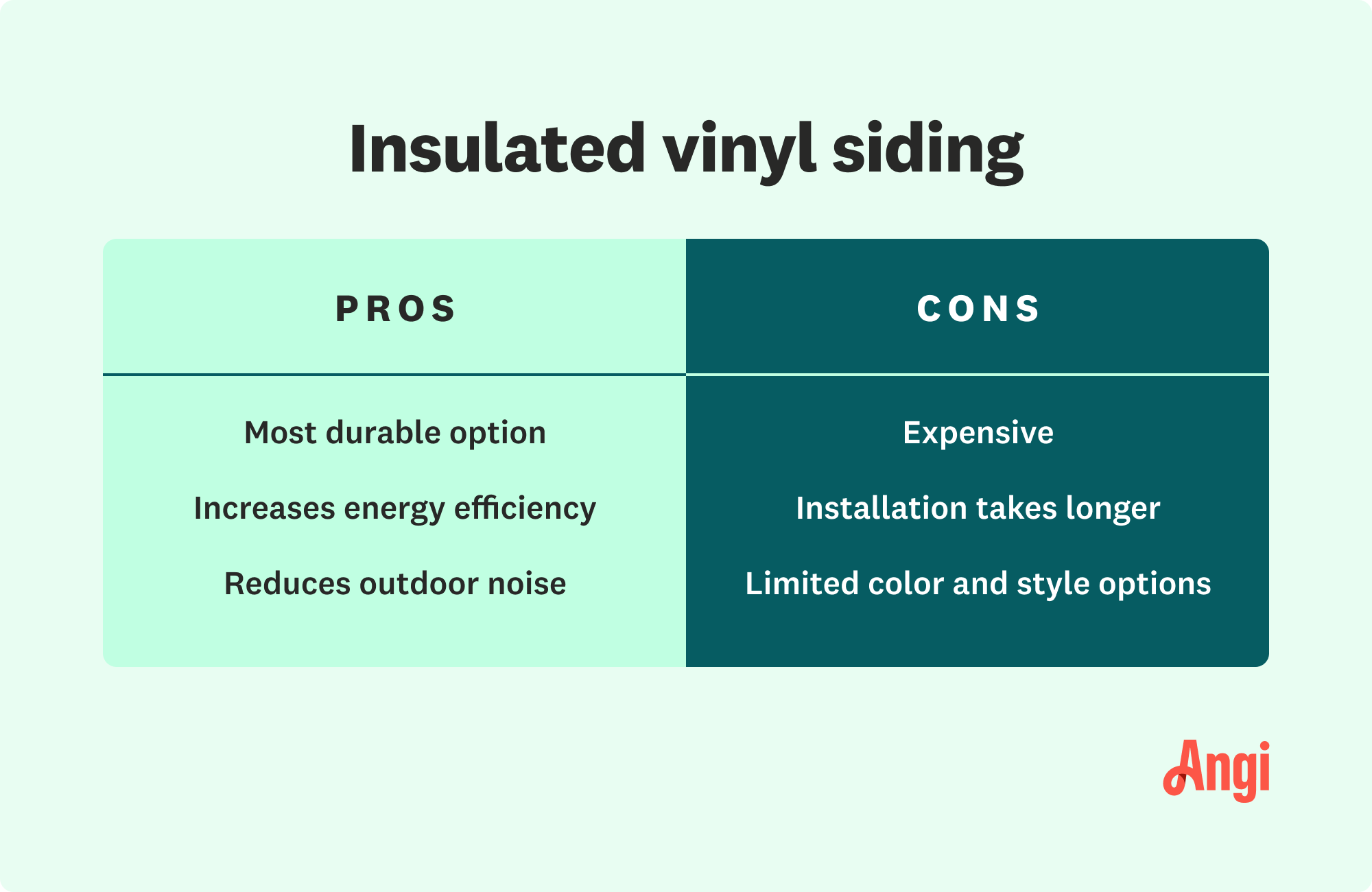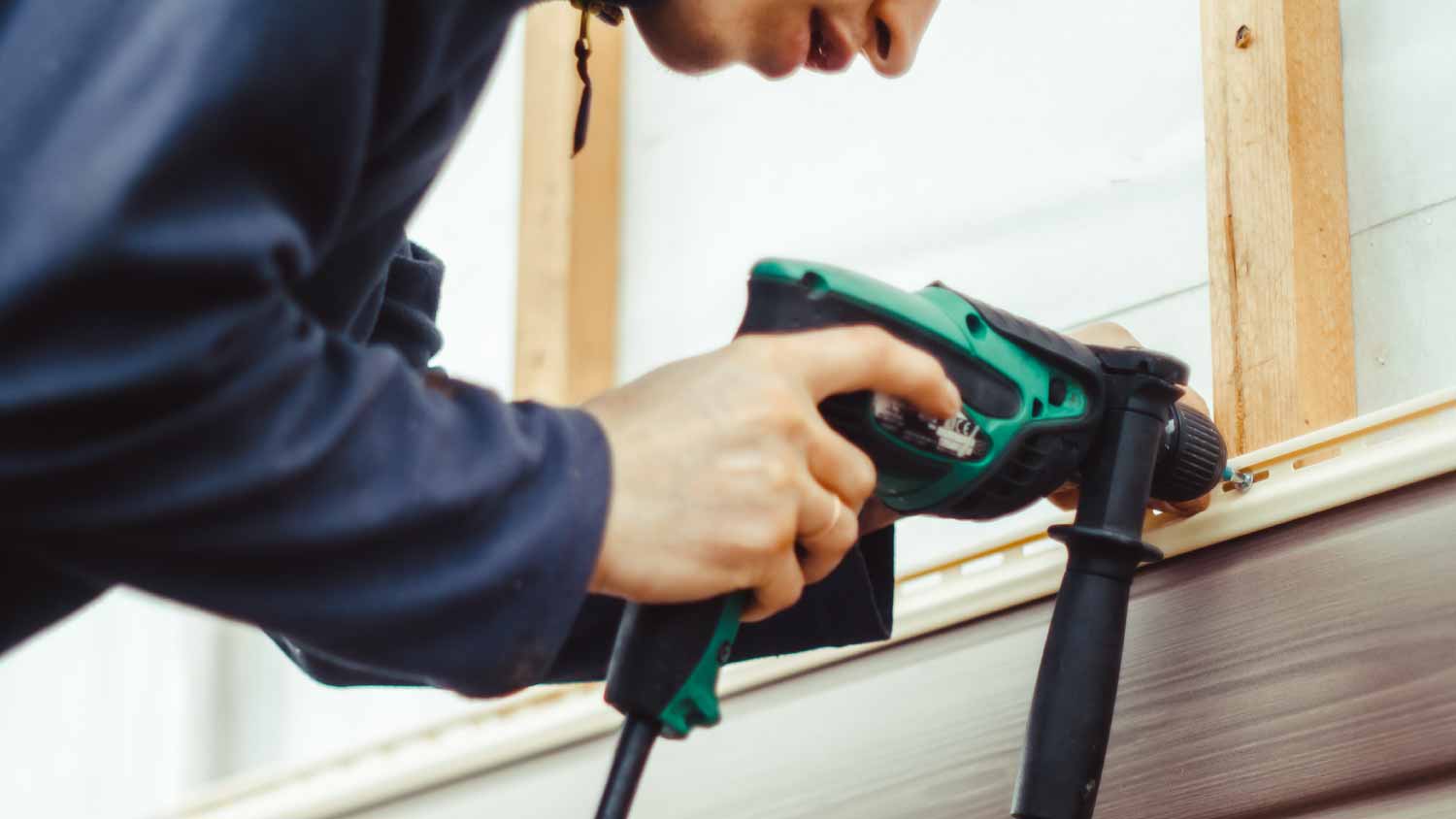
Brick veneer is a popular siding material that can boost your curb appeal. Learn all about how much this siding material costs based on factors like location and type.
Does the performance of insulated vinyl siding justify its higher price tag?


Insulated vinyl siding is backed with a layer of expanded polystyrene insulation.
Insulated vinyl siding is durable and energy-efficient, and it can reduce noise.
Installing insulated vinyl siding can be up to 50% more expensive than standard vinyl siding.
Upgrading the siding on your home is an investment that doesn't happen frequently for homeowners, but it’s a great opportunity to increase your curb appeal. Your siding options include insulated vinyl siding, an innovative product that has grown in popularity in recent years. Although pricey, it’s incredibly durable and long-lasting. Keep reading to learn more about insulated vinyl siding pros and cons.
Insulated vinyl siding is constructed from premium vinyl with an expanded polystyrene insulation backing. This added layer of insulation offers better protection against fading, warping, and other forms of deterioration. Due to its durability and high-quality materials, insulated vinyl siding is one of the longest-lasting siding options available.


You've decided that vinyl siding is right for you, but what about the added option of insulation? While insulated vinyl siding has become increasingly popular since its introduction in the late 1990s, there are pros and cons to consider.
There's a good reason more than half a million homeowners have chosen insulated vinyl siding in their homes. This style of siding has numerous benefits for homeowners.
Most types of vinyl siding—and other types of siding like stucco, for instance—can't handle extreme temperatures and are susceptible to natural and man-made damage. But insulated vinyl siding’s foam backing gives it added strength and support, so it stands up better to impact, weather, and other types of wear and tear.
Vinyl siding without insulation has a low R-value of just 0.61, while insulated vinyl siding has an R-value of 2 to 2.7—a big difference. Homes that are not properly insulated can result in energy leaks that increase heating and cooling costs. But with insulated vinyl siding, the extra insulation can reduce energy costs, making your home more energy-efficient while also improving the effectiveness of your HVAC system.
Standard vinyl siding is already effective at keeping homes pest-free, but insulated vinyl siding offers an extra layer of protection. The foam behind the siding also eliminates a common spot for termites or other bugs to create a home.
If you live in a noisy area and would love to reduce outside sounds coming into your home, insulated vinyl siding is a great solution. The added insulation dampens outdoor noise, allowing you to enjoy a more peaceful home indoors.
While there are valuable benefits homeowners can enjoy with insulated vinyl siding, those benefits come with a price.
Insulated vinyl siding can be 50% more expensive compared to the standard vinyl siding cost. Part of this cost is for the materials, and another huge cost factor is labor. When deciding whether insulated vinyl siding is right for you, you’ll need to consider whether the extra up-front costs are worth it, considering how long the siding will last and how much it can help you save on energy bills.
The process of installing vinyl siding is similar whether you're installing insulated or traditional siding. However, with insulated vinyl siding, there are additional steps, tools, and labor required. For example, to accommodate the thickness of the insulation, extra prep work on openings such as doors and windows may be needed. Find a local vinyl siding installer for an accurate quote for your area.
The unique structure of insulated vinyl siding has allowed manufacturers to experiment with new looks, like deeper colors and wider profiles. However, because insulated vinyl siding is a newer product, overall, there are fewer style options for homeowners to choose from. The limited number of colors and styles means it may be more difficult to find exactly what it is you're looking for, but you can still determine what the best vinyl siding color is for you within the options available.
From average costs to expert advice, get all the answers you need to get your job done.

Brick veneer is a popular siding material that can boost your curb appeal. Learn all about how much this siding material costs based on factors like location and type.

The stone veneer siding cost you’ll pay depends significantly on materials and local labor costs. Learn more about factors that affect the project’s cost.

Learn about the average siding repair cost to expect based on siding type, repair type, and extra labor when getting estimates to fix siding from contractors.

Knowing whether to install windows or siding first can save you time and money on your renovations. Here’s everything you need to know before you get started.
.jpg?impolicy=leadImage)
Stucco that isn’t waterproofed leaves your home vulnerable to moisture damage. Learn four ways to waterproof stucco for the most protection.

Determining how much EIFS costs per square foot is the key to predicting your bottom line when replacing or installing this long-lasting home cladding option.